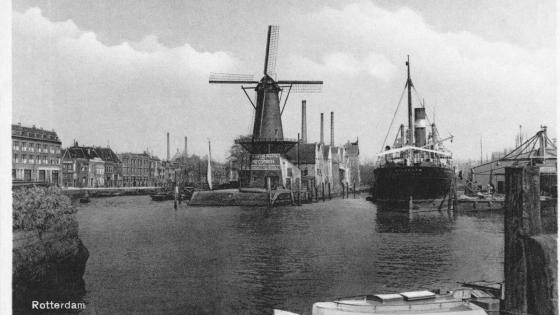During the past decades, tariffs rates have been progressively reduced, under the auspices of the General Agreement on Tariffs and Trade (GATT)/WTO and the proliferation of preferential trade agreements. However, trade is a long way from free. Non-tariff measures, in addition to tariffs and transport costs, still hinder international trade flows.
In a recent study by the International Trade Centre (2015) based on large-scale surveys of companies in developing countries, rules of origin (RoO) emerge as the most problematic non-tariff measure faced by manufacturing firms. Free trade agreements (FTAs) employ these rules to distinguish goods originating from member countries from those originating from third countries. In principle, RoO are meant to prevent trade deflection, i.e. to ensure that goods being exported at preferential rates from one FTA partner to another truly originate from the area and are not simply assembled from components originating from third countries. In practice, they prevent final good producers from choosing the most efficient input suppliers around the world, for fear of losing ‘origin status’ and the tariff preference it confers.
RoO can clearly constrain sourcing decisions. A final good producer faced with RoO restrictions has two options. It can comply with the rules, in which case it can export to the FTA partners at preferential tariff rates, but must source certain inputs within the FTA. Or it can decide not to comply with the rules, in which case it can source its inputs from any supplier around the world, but faces MFN tariffs when exporting to the FTA partners.
Theoretical studies have long pointed out that RoO can give rise to trade diversion in intermediaries (e.g. Grossman 1981, Falvey and Reed 1998). On the empirical front, however, direct evidence of this effect has been lacking, due to the legal complexity of the rules.1
In a new paper (Conconi et al. 2016), we overcome this difficulty by focusing on NAFTA, the world's largest FTA. The focus on NAFTA is due to the specific features of its RoO. First, the rules contained in the NAFTA agreement are written at a disaggregated level, with specific rules for each product.2 Second, they are mostly defined in terms of change of tariff classification, with few instances in which these rules are combined with valued added rules. These features allow us to construct a unique dataset, which maps the input-output linkages embedded in NAFTA RoO. For every final good, we can trace all the inputs that are subject to RoO requirements. Similarly, we can link every intermediate good to the final goods that impose RoO restrictions on its sourcing.
To capture the effect of RoO, we construct different treatment variables. For each intermediate good, we first consider all final goods that impose sourcing restrictions on that particular input. We next exclude rules associated with final goods with zero preference margin. These rules should have no impact on sourcing decisions, given that final good producers have no incentives to comply with them. We then further exclude flexible rules, i.e. instances in which final good producers can obtain origin by meeting a value added requirement. We also experiment with weighting the rules by the importance of the input-output linkages.
Figure 1

Figure 1 provides a graphical representation of our RoO measures. Outputs i are located on the horizontal axis, whereas inputs j are on the vertical axis. Almost all intermediate goods have rules of origin associated to several outputs and most of them with outputs that fall into the same sector category. The figure represents well the input-output linkages in NAFTA RoO. However, it fails to show the full richness of our dataset, which contains more than 700,000 pairs defining RoO. In many cases, there are hundreds or even thousands of RoO within each of the blue dots.3
We investigate the impact of NAFTA RoO on imports of intermediate goods from non-member countries. To deal with concerns about the endogeneity of NAFTA RoO, we focus our analysis on Mexico rather than Canada or the United States. We argue that, from the point of view of Mexico, NAFTA RoO were to a large extent inherited from those of the Canada-United States Free Trade Agreement (CUSFTA). Indeed, the correlation between the RoO contained in the two agreements is very high (0.91).
To study the impact of NAFTA RoO, we employ a difference-in-differences approach, which allows us to account for the role of time-invariant unobservable product characteristics. In particular, we examine changes in Mexican imports before and after the entry into force of NAFTA. We compare changes in imports of “treated” and “non-treated” goods, depending on whether they were subject to NAFTA sourcing restrictions. We also exploit variation in the intensity of treatment, both in terms of the number and type of sourcing restrictions.
Our results show that NAFTA RoO on final goods led to a significant reduction in Mexican imports of intermediate goods from non-NAFTA countries. As expected, the magnitude of this effect depends on whether the sourcing restrictions were strict or flexible (i.e. whether change in tariff classification rules were combined with alternative value added rules) and on the extent to which Mexican producers had incentives to comply with them (i.e. on the size of the preference margin and the importance of NAFTA export markets). On average, strict RoO decreased imports of intermediaries by around 30 percentage points. The results are robust to focusing on different sets of rules, using alternative methodologies to construct the treatment variables, using different samples of goods and countries, and instrumenting NAFTA RoO with those contained in the CUSFTA agreement.
It is well known that input tariffs are low compared to tariffs on final goods (e.g. Miroudot et al. 2009). Our analysis shows that, when accounting for the sourcing restrictions embedded in preferential trade agreements, the effective rate of protection on these goods is much higher. This finding has important implications for multilateral trade rules. Article XXIV of the GATT states that “the duties and other regulations of commerce maintained in each of the constituent territories and applicable at the formation of such free-trade area […] shall not be higher or more restrictive than the corresponding duties and other regulations of commerce existing in the same constituent territories prior to the formation of the free trade area”. Our findings show that preferential RoO in FTAs can violate this rule, by substantially increasing the level of protection faced by non-members.
Our paper contributes to the literature that examines the impact of preferential trade agreements. In particular, it is related to recent studies that assess the effects of NAFTA on trade and welfare (Kehoe and Ruhl, 2013; Caliendo and Parro, 2015). These studies abstract from the role of preferential RoO. Our results show that, when accounting for these sourcing restrictions, the trade diversion effect of NAFTA was much larger.
References
Caliendo, L., and F. Parro (2015). “Estimates of the Trade and Welfare Effects of NAFTA,” Review of Economic Studies 82, 1-44.
Conconi, P., M. Garcìa Santana, L. Puccio, and R. Venturini (2016). “From Final Goods to Inputs: the Protectionist Effect of Preferential Rules of Origin”, CEPR Discussion Paper 11084.
Estevadeordal, A. (2000). “Negotiating Preferential Market Access: The Case of the North American Free Trade Agreement,” Journal of World Trade 34, 141-166.
Falvey, R., and G. Reed (1998). “Economic Effects of Rules of Origin,” Review of World Economics, 134, 209-229.
Grossman, G. M. (1981). “The Theory of Domestic Content Protection and Content Preference,” Quarterly Journal of Economics 96, 583-603.
International Trade Centre (2015). “The Invisible Barriers to Trade: How Businesses Experience Non-Tariff Measures.”
Kehoe, T., and K. Ruhl (2013). “How Important is the New Goods Margin in International Trade?” Journal of Political Economy 121, 358-392.
Miroudot, S. , Lanz, R. and A. Ragoussis (2009). “Trade in Intermediate Goods and Services,” OECD Trade Policy Working Paper 93.
Endnotes
[1] To capture the restrictiveness of RoO, previous studies use synthetic indices (e.g. Estevadeordal 2000), which do not allow to identify vertical linkages between goods.
[2] For example, the rules contained in the NAFTA Agreement stipulate that watches (heading 91.02 in the HS classification) must undergo change of HS chapter, i.e. non-originating inputs must not fall under HS chapter 91. This rule implies that watches can only be traded duty free among NAFTA members if the watch movements (HS 91.08), watch straps (HS 91.13) and watch cases (HS 91.12) used to produce them are sourced from producers located within the FTA.
[3] See RoO movie.







